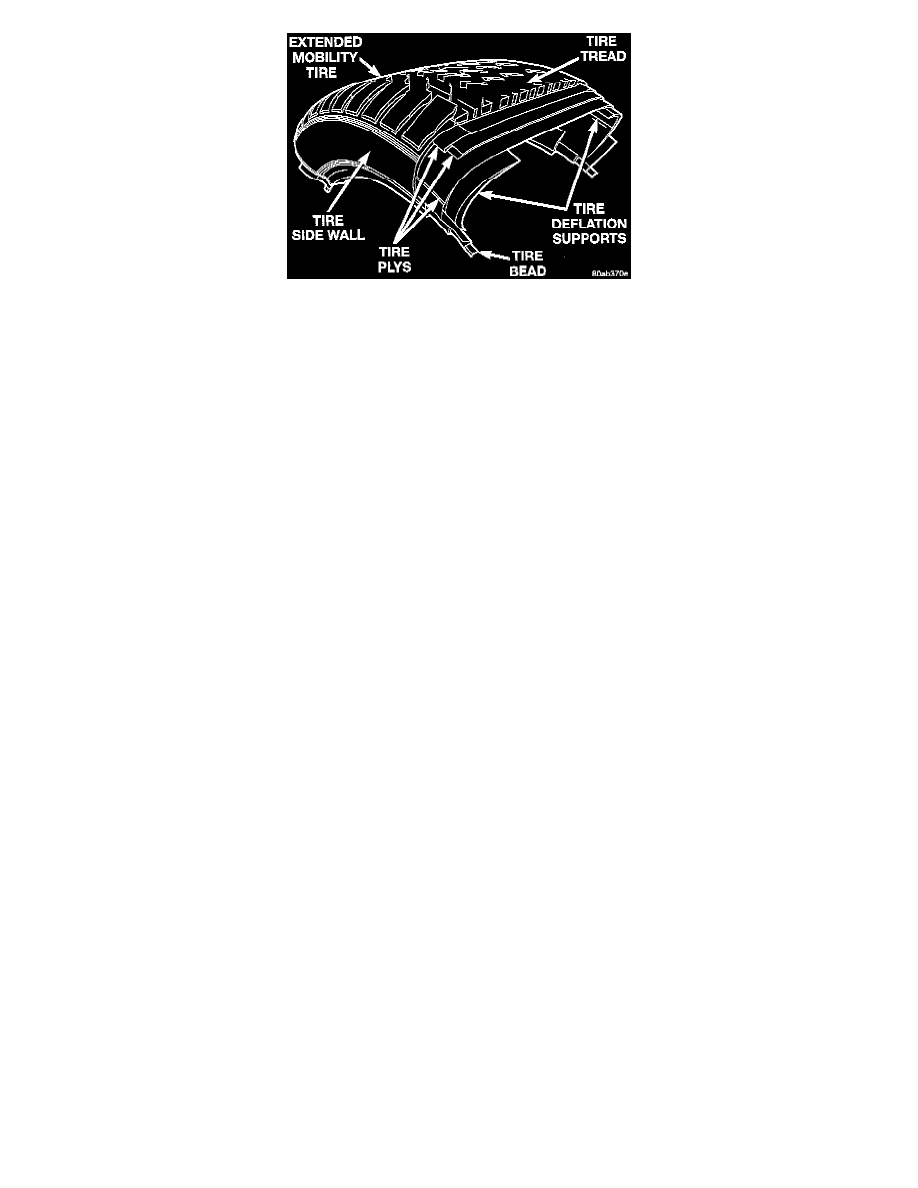Prowler V6-3.5L VIN G (1999)

This vehicle does not come equipped with a spare tire and no storage location for any type of spare tire is provided. For this reason, the vehicle is
equipped with Extended Mobility Tires (EMT).
An EMT tire is designed to allow a vehicle equipped with them to be driven on one or more tires that have zero air pressure.
This is accomplished by the special design and compounding of the deflation supports in the sidewall structure of the tire. This special design and
compounding of the deflation supports, allows the tire to support the weight of the vehicle when there is no air pressure in the tire.
The EMT tires will allow this vehicle to be driven with one or more tires that have zero air pressure in them. The speed the vehicle can be driven at and
the distance the vehicle can be driven though are limited. The vehicle can only be driven at a maximum speed of 55 miles per hour and for a maximum
distance of 50 miles at that speed.
NOTE: When driving a vehicle with an EMT tire that has lost air pressure, the overall handling of the vehicle will not be greatly affected but the vehicle
should be driven cautiously. Do not make maneuver with the vehicle that will put excessive force into the sidewalls of the tire such as hard cornering or
the taking of curves at excessive speed. Also, hard stops and rapid acceleration should be avoided.
In the event air pressure is lost in one or more of the EMT tires on this vehicle, the vehicle can continue to be driven. The recommended speed limit of
55 mph and driving distance of 50 miles for the EMT tires on this vehicle though should not be exceeded.
As soon as possible after a low or critical tire pressure condition is alerted to the driver by the Low Tire Pressure Warning System, the vehicle should be
taken to a service facility. At this time the tire should be inspected to determine if the tire can be repaired or if it will be necessary to replace the tire.
Radial-Ply Tires
Radial-ply tires improve handling, tread life, ride quality and decrease the rolling resistance of the tire.
Radial-ply tires must always be used in sets of four and under no circumstances should they ever be used only on the front of the vehicle.
Radial-ply tires have the same load-carrying capacity as other types of tires of the same size. They also use the same recommended inflation pressures.
It is recommended that tires from different manufactures NOT be mixed. The proper tire inflation pressure should always be maintained in all four tires.
For proper tire inflation pressure refer to the Tire Inflation Pressure Chart provided with the vehicle.
Replacement Tire Information
WARNING: Failure to equip the vehicle with tires having adequate speed capability can result in sudden tire failure.
The original tires installed at the time this vehicle was built, provide the proper balance of many vehicle characteristics such as:
-
Extended Mobility Capability
-
Ride
-
Noise
-
Handling
-
Durability
-
Tread life
-
Traction
-
Rolling resistance
-
Speed capability
It is recommend that only tires equivalent to the original equipment tires be used when replacement tires are needed for this vehicle.
Failure to use equivalent replacement tires may adversely affect the safety and handling of this vehicle.
